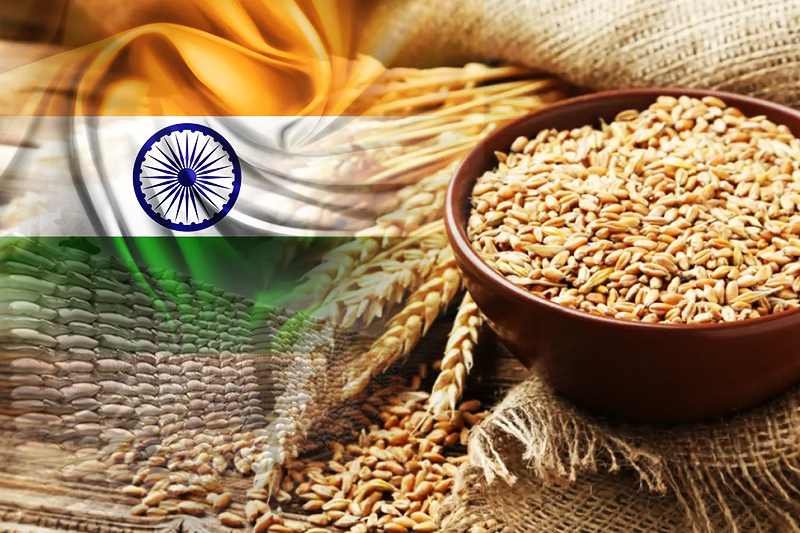India may reduce wheat output estimate due to unseasonal showers, hail

The Indian government could reduce its wheat harvest estimate as unseasonal showers and hailstorms led to sizable damage to the wheat crop in the Indian states of Punjab, Uttar Pradesh and Madhya Pradesh, sources in the agriculture ministry told S&P Global Commodity Insights.
The agriculture ministry has decided to conduct a preliminary survey to assess the damage to the crop, an official at the ministry said.
According to government sources, the production estimates for marketing year 2022-23 (April-March) are likely to reduce by 1 million-2 million mt from the projected output of 112.2 million mt, a record harvest.
Market participants are, however, skeptical of India’s wheat harvest estimate. According to an S&P Global survey of 11 analysts and traders, India’s wheat harvest is expected at 107 million-108 million mt in MY 2022-23.
Some trade sources in Asia even see the production lower between 92 million-95 million mt, echoing the total production in MY 2021-22.
According to the Indian Meteorological Department, key wheat-growing states — Rajasthan, Madhya Pradesh, Punjab and Bihar – are likely to witness more showers and hailstorms over the next few days again.
Sources in the trading circles are concerned that more showers and hailstorms may lead to yield and quality loss in the crop.
“At this stage, heavy rain and strong storms will inundate fields and hit fully ripened wheat, however, the extent of damage is not certain,” a scientist with the Agricultural Meteorology Division of IMD said.
While harvesting is now set to be delayed, the yield losses can be balanced out as in parts of Punjab, Haryana and Uttar Pradesh the wheat crops are not yet fully mature, the scientist added. In these states, wheat is harvested in April.
While there are chances that the yield loss can be contained with a delayed harvest, already harvested crop stored in open spaces has been damaged entirely, an official with the state agriculture department of Rajasthan said.
In some areas of Madhya Pradesh and Rajasthan, wheat is harvested earlier than the usual time. Wheat is planted during October-November and harvested over March-April.
The government has planned to purchase 34.2 million mt wheat from the crop harvested in MY 2022-23, an official with the food ministry said.
The government is likely to relax norms for wheat procurement to ensure adequate purchases by the government.
Under the fair and average quality standards, the Food Corporation of India and state agencies purchase wheat at minimum support price with a maximum moisture content of 12%.
The government may allow purchasing wheat with as high as 14% moisture content, the official said.
In October 2022, the government had hiked the minimum support price for wheat to Rupees 21,250/mt ($258.46/mt), up from Rupees 20,150/mt set for the previous year.
A likely reduction in the crop size would also mean there would be no imminent changes to India’s wheat export ban until clear picture emerges on harvest and domestic inventory situation.
FCI chairman Ashok Meena said to local media the wheat export ban would continue as long as the government does not feel comfortable with domestic supplies.
“The government is looking ensure enough procurement to run government schemes and ensure adequate domestic supply before looking at potential changes in the export policy,” an official with the food ministry said.
Due to a decline in output in MY 2021-22, India imposed a ban on wheat exports on May 13, 2022, to check rising wheat prices and ensure adequate supply. The country emerged as a key supplier of wheat amid global shortages in the wake of Russia’s invasion of Ukraine.
The government has also released 5 million stocks from its inventories over January-February, forcing domestic wheat prices to ease.
As of March 1, the government has 11.7 million mt wheat in its stocks, nearly halving on the year.
Wheat prices have declined to around Rupees 22,000/mt ($267.58/mt) March 29, down from record highs of Rupees 31,500/mt seen in January, traders said.
Trade sources in Asia remain skeptical of wheat exports coming out of India in 2023. Several sources noted that the government’s priority would be to rebuild wheat inventories used to cool domestic prices in 2023.
Read also
Wheat in Southern Brazil Impacted by Dry Weather and Frosts
Oilseed Industry. Leaders and Strategies in the Times of a Great Change
Black Sea & Danube Region: Oilseed and Vegoil Markets Within Ongoing Transfor...
Serbia. The drought will cause extremely high losses for farmers this year
2023/24 Safrinha Corn in Brazil 91% Harvested
Write to us
Our manager will contact you soon



